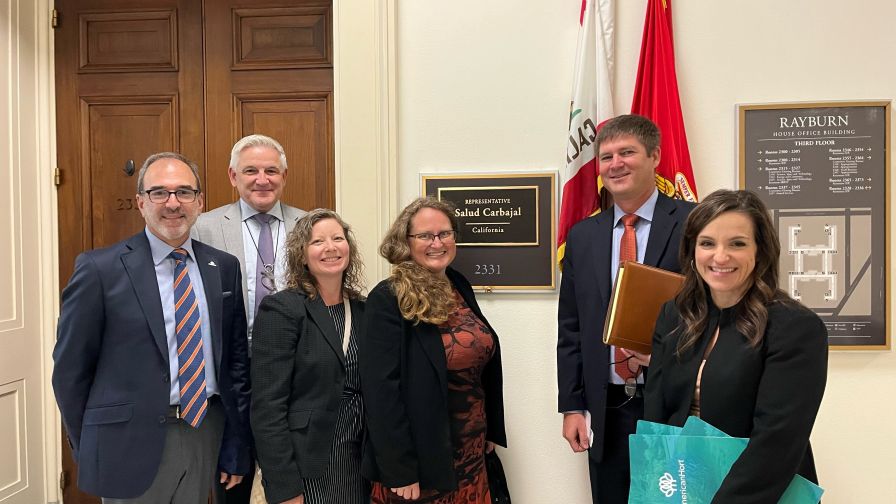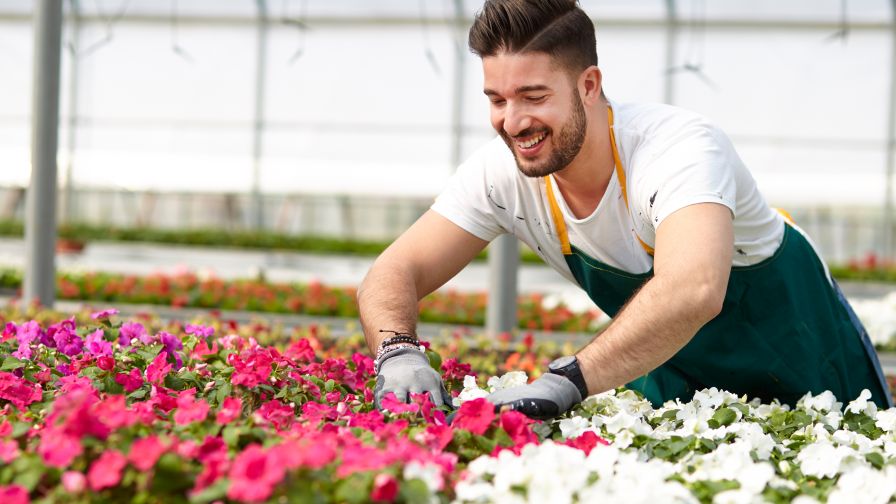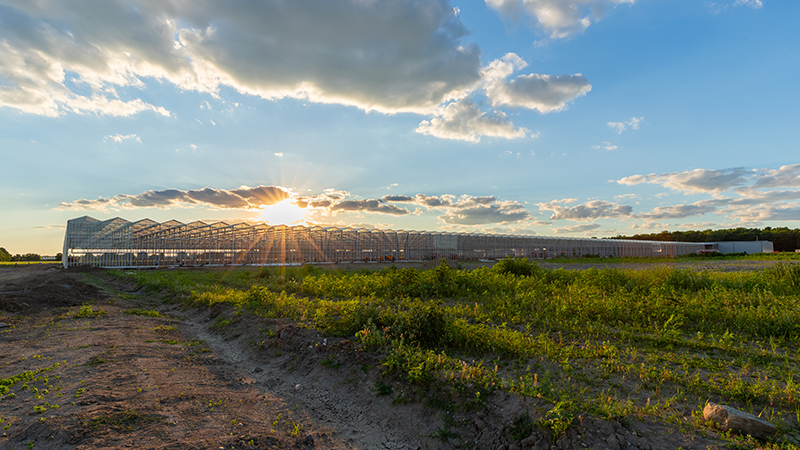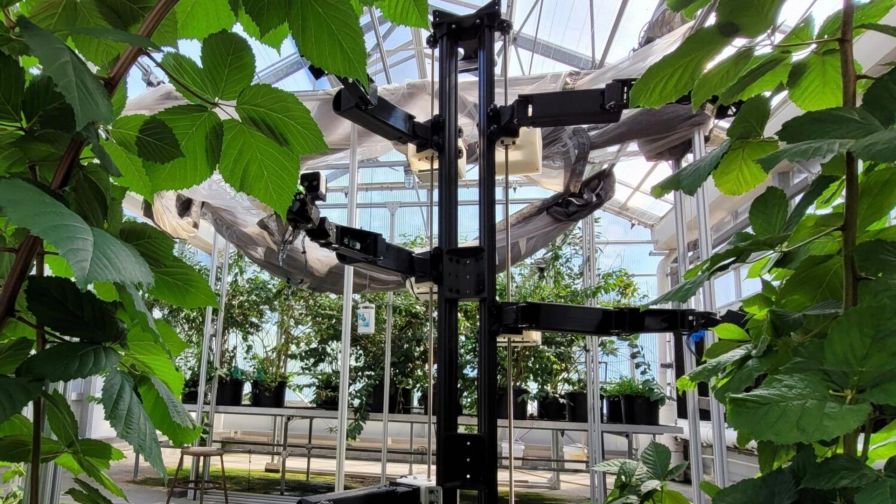This Month’s Cover Story: Six Trends That Drove Horticulture in 2023
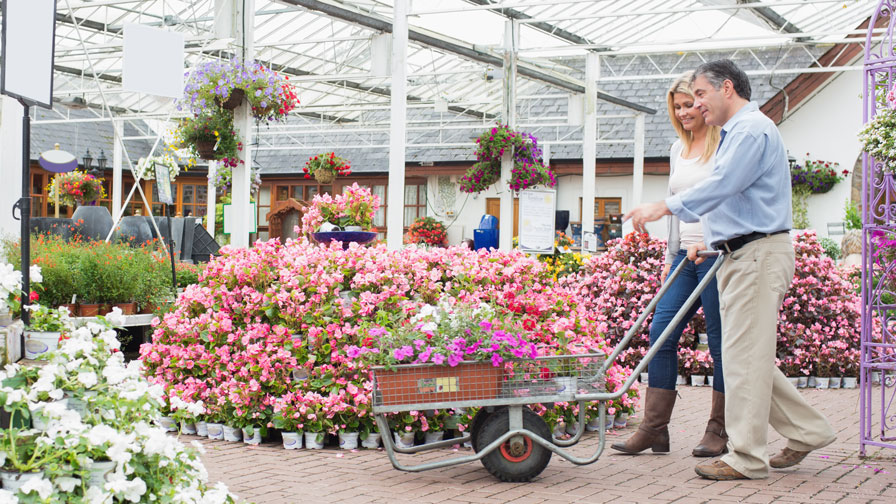
AdobeStock image
In a recent interview, Metrolina Greenhouses’ Abe Van Wingerden told our team at Greenhouse Grower that “if you’ve entered the horticulture industry in the last five years, you haven’t had a normal year yet.” But perhaps as we close the book on 2023 and shift into the coming years, that will no longer be the case.
There are any number of headlines that may have defined the market this year. We’ve narrowed it down to six topics that will likely also have a major impact on the future.
Primed for Growth
Looking back at Greenhouse Grower’s Top 100 Growers list from earlier this year, a majority of the nation’s largest ornamentals operations maintained the same size from 2022 to 2023. But there is potential for rapid growth in the coming year. In our Top 100 Growers survey, and in follow-up phone calls and emails with several growers on the list, many told us they were planning for expansion — some major — heading into 2024. Of those growers who did not take the status quo route, 25 increased their production in 2023, while only nine companies reduced their production.
The reasons for all this are twofold. 2022 brought major supply chain concerns as global markets recovered from the COVID-19 pandemic. Those growers who had strong years in 2020 and 2021 may have had the financial ability to grow, but they didn’t want to risk delays in building materials. These issues, for the most part, have subsided.
At the same time, there were lingering concerns over whether consumers gained during the pandemic would continue their interest in gardening. But as Abe Van Wingerden said during our call this past summer, “The post-COVID consumer has stayed, and we’ve seen great sales. I feel great about where the consumer is — they’re in a really good place in the live goods space.”
Emerging Leadership
In 2022, AmericanHort and the Horticultural Research Institute (HRI) launched the HRI Leadership Academy, a one-year leadership program designed to develop the skills the green industry needs to perform better, grow faster, and prepare for the future. Consisting of in-person training sessions, online classes, and virtual meetings, the HRI Leadership Academy addresses the industry’s need for leadership development serving both current and future leaders.
Fast forward to this year, and the inaugural HRI Leadership Academy class successfully completed their program. The class spent the year honing business acumen, building a toolbox of leadership strategies, diving deep into advocacy issues, learning the art of negotiation, and more. Now, as program graduates, they are eager to put the skills learned into practice in their businesses, their communities, and in the industry.
Two of this year’s class members were Matt Foertmeyer of Foertmeyer and Sons in Ohio and Denise Mullins of Smith Gardens in Washington. Learn more about their experience at is.gd/GGpodcast.
The CEA Shakeout
“The indoor agriculture industry is currently experiencing a turbulent period characterized by numerous bankruptcies, layoffs, and farm closures. It’s clear a complex web of factors are influencing its ups and downs, yet the future outlook still holds hope for the industry.”
That’s according to Nicola Kerslake, the founder of Contain Inc., a fintech hub for controlled environment agriculture. In an article from earlier this year, Kerslake dove into the reasons behind these closures, examined the enduring appeal of indoor ag, and painted a picture of what the industry may look like in 2030.
“While there are challenges associated with scaling indoor operations like high capital investment, operational costs increase while scaling, maintaining crop consistency/quality while scaling, and supply chain management, ongoing research and innovation teams within the industry are actively exploring ways to overcome these limitations and enable scalable production,” Kerslake says of the industry.
Expanded Footprint
In 2022, MPS launched its new HortiFootprint Calculator. Over the past three years, MPS worked with several parties within the greenhouse sector, as well as Wageningen University, because they saw that growers’ interest in calculating their carbon footprint was increasing.
“We created a database to include the impact of everything from plastic to substrates to electricity, fuels, transportation, and crop protection tools,” says Raymond Scheepens, Area Manager at MPS. “We quickly learned that a lot of this information is already in the MPS-ABC registration tool, in some cases more than 70%, so the next step was to provide growers with a footprint calculation tool which can already be filled with information out of the MPS-ABC registration tool.”
This year, the Resource Innovation Institute formed a “CEA Footprint Project” that brings experts together from across the industry to establish agreed-upon methodologies that can guide environmental accounting and reporting related to controlled-environment agriculture (CEA), as well as how CEA can be compared to traditional farming. The group will meet through early 2024 to determine methodologies for measuring water and energy consumption, overall carbon footprint, and other important environmental factors across greenhouse, indoor, and field production methods. At the close of the project, the group will produce and release a guide on agricultural environmental accounting and reporting standards for farm operations and other stakeholders.
Making Use of Artificial Intelligence
2023 may be the year that artificial intelligence (AI) shifted from being a pie-in-the-sky approach to something that delivers practical results in the greenhouse. Companies such as IUNU, Blue Radix, and Priva are working with growers of all types to apply AI solutions to their businesses.
Adam Greenberg, CEO of IUNU, explains that imaging and AI is really about helping the grower scale how they already know to grow. The idea is to take established processes and equipment from other areas and adapt them to controlled-environment agriculture, providing a usable tool to the grower.
“We are bringing widely used technology from other industries, computer vision, and machine learning, into the greenhouse,” says Mauricio Manotas, Chief Revenue Officer at Ecoation, another company at the forefront of innovation.
Now comes the latest buzzworthy tools: ChatGPT and Google’s Bard. ChatGPT is a new chatbot, a software application used to conduct an online chat conversation via text or text-to-speech, in lieu of providing direct contact with a live human agent.
What can ChatGPT bring to you and your operation? A good place to start is by reading an article written by John Beauford, President and Chief Technology Officer of Advanced Grower Solutions. You can find John’s article at is.gd/AIchatbot.
Peat Update
In September, the Canadian Sphagnum Peat Moss Association (CSPMA) released a harvest report explaining that poor weather conditions led to significantly lower harvest results this season. New Brunswick saw the worst historic weather conditions and harvested 40% of its expected quantity. Alberta, Saskatchewan, and Manitoba saw 48%, 68%, and 79%, respectively, of their expected harvests in cubic feet.
The harvest on Québec’s South Shore (72%) and North Shore (50%) were also below expectations. Summer storms, particularly on the North Shore, did not permit either region to achieve its targeted volumes. Similar weather patterns affected the Ontario (78%) harvest, according to the release.
“It’s fair to say that the last two years have been challenging for the industry,” CSPMA President Asha Hingorani says. “The majority of the industry has a significant carryover of peat from the previous season. The industry is confident that it will meet the needs of the market.”
A multitude of factors contribute to the current state of the horticulture industry. Despite a few setbacks and challenges, the future is bright.






